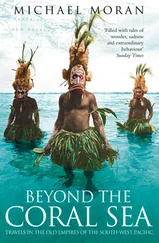Journeys by land are attended with considerable difficulties in the conveyance of instruments and collections, but these difficulties are compensated by advantages which it is unnecessary to enumerate. It is not by sailing along a coast that we can discover the direction of chains of mountains, and their geological constitution, the climate of each zone, and its influence on the forms and habits of organized beings. In proportion to the extent of continents, the greater on the surface of the soil are the riches of animal and vegetable productions; the more distant the central chain of mountains from the sea-shore, the greater is the variety in the bosom of the earth, of those stony strata, the regular succession of which unfolds the history of our planet. As every being considered apart is impressed with a particular type, so, in like manner, we find the same distinctive impression in the arrangement of brute matter organized in rocks, and also in the distribution and mutual relations of plants and animals. The great problem of the physical description of the globe, is the determination of the form of these types, the laws of their relations with each other, and the eternal ties which link the phenomena of life, and those of inanimate nature.
Having stated the general object I had in view in my expeditions, I will now hasten to give a slight sketch of the whole of the collections and observations which we have accumulated, and the union of which is the aim and end of every scientific journey. The maritime war, during our abode in America, having rendered communication with Europe very uncertain, we found ourselves compelled, in order to diminish the chance of losses, to form three different collections. Of these, the first was embarked for Spain and France, the second for the United States and England, and the third, which was the most considerable, remained almost constantly under our own eyes. Towards the close of our expedition, this last collection formed forty-two boxes, containing an herbal of six thousand equinoctial plants, seeds, shells, insects, and (what had hitherto never been brought to Europe) geological specimens, from the Chimborazo, New Grenada, and the banks of the river Amazon.
After our journey to the Orinoco, we left a part of these collections at the island of Cuba, intending to take them on our return from Peru to Mexico. The rest followed us during the space of five years, on the chain of the Andes, across New Spain, from the shores of the Pacific to the coasts of the Caribbean Sea. The conveyance of these objects, and the minute care they required, occasioned embarrassments scarcely conceiveable even by those who have traversed the most uncultivated parts of Europe. Our progress was often retarded by the necessity of dragging after us, during expeditions of five or six months, twelve, fifteen, and sometimes more than twenty loaded mules, exchanging these animals every eight or ten days, and superintending the Indians who were employed in driving the numerous caravan. Often, in order to add to our collections of new mineral substances, we found ourselves obliged to throw away others, which we had collected a considerable time before. These sacrifices were not less vexatious than the losses we accidentally sustained. Sad experience taught us but too late, that from the sultry humidity of the climate, and the frequent falls of the beasts of burden, we could preserve neither the skins of animals hastily prepared, nor the fishes and reptiles placed in phials filled with alcohol. I enter into these details, because, though little interesting in themselves, they serve to show that we had no means of bringing back, in their natural state, many objects of zoology and comparative anatomy, of which we have published descriptions and drawings. Notwithstanding some obstacles, and the expense occasioned by the carriage of these articles, I had reason to applaud the resolution I had taken before my departure, of sending to Europe the duplicates only of the productions we collected. I cannot too often repeat, that when the seas are infested with privateers, a traveller can be sure only of the objects in his own possession. A very few of the duplicates, which we shipped for Europe during our abode in America, were saved; the greater part fell into the hands of persons who feel no interest for science. When a ship is condemned in a foreign port, boxes containing only dried plants or stones, instead of being sent to the scientific men to whom they are addressed, are put aside and forgotten. Some of our geological collections taken in the Pacific were, however, more fortunate. We were indebted for their preservation to the generous activity of Sir Joseph Banks, President of the Royal Society of London, who, amidst the political agitations of Europe, unceasingly laboured to strengthen the bonds of union between scientific men of all nations.
In our investigations we have considered each phenomenon under different aspects, and classed our remarks according to the relations they bear to each other. To afford an idea of the method we have followed, I will here add a succinct enumeration of the materials with which we were furnished for describing the volcanoes of Antisana and Pichincha, as well as that of Jorullo: the latter, during the night of the 20th of September, 1759, rose from the earth one thousand five hundred and seventy-eight French feet above the surrounding plains of Mexico. The position of these singular mountains in longitude and latitude was ascertained by astronomical observations. We took the heights of the different parts by the aid of the barometer, and determined the dip of the needle and the intensity of the magnetic forces. Our collections contain the plants which are spread over the flanks of these volcanoes, and specimens of different rocks which, superposed one upon another, constitute their external coat. We are enabled to indicate, by measures sufficiently exact, the height above the level of the ocean, at which we found each group of plants, and each volcanic rock. Our journals furnish us with a series of observations on the humidity, the temperature, the electricity, and the degree of transparency of the air on the brinks of the craters of Pichincha and Jorullo; they also contain topographical plans and geological profiles of these mountains, founded in part on the measure of vertical bases, and on angles of altitude. Each observation has been calculated according to the tables and the methods which are considered most exact in the present state of our knowledge; and in order to judge of the degree of confidence which the results may claim, we have preserved the whole detail of our partial operations.
It would have been possible to blend these different materials in a work devoted wholly to the description of the volcanoes of Peru and New Spain. Had I given the physical description of a single province, I could have treated separately everything relating to its geography, mineralogy, and botany; but how could I interrupt the narrative of a journey, a disquisition on the manners of a people, or the great phenomena of nature, by an enumeration of the productions of the country, the description of new species of animals and plants, or the detail of astronomical observations. Had I adopted a mode of composition which would have included in one and the same chapter all that has been observed on one particular point of the globe, I should have prepared a work of cumbrous length, and devoid of that clearness which arises in a great measure from the methodical distribution of matter. Notwithstanding the efforts I have made to avoid, in this narrative, the errors I had to dread, I feel conscious that I have not always succeeded in separating the observations of detail from those general results which interest every enlightened mind. These results comprise in one view the climate and its influence on organized beings, the aspect of the country, varied according to the nature of the soil and its vegetable covering, the direction of the mountains and rivers which separate races of men as well as tribes of plants; and finally, the modifications observable in the condition of people living in different latitudes, and in circumstances more or less favourable to the development of their faculties. I do not fear having too much enlarged on objects so worthy of attention: one of the noblest characteristics which distinguish modern civilization from that of remoter times is, that it has enlarged the mass of our conceptions, rendered us more capable of perceiving the connection between the physical and intellectual world, and thrown a more general interest over objects which heretofore occupied only a few scientific men, because those objects were contemplated separately, and from a narrower point of view.
Читать дальше












